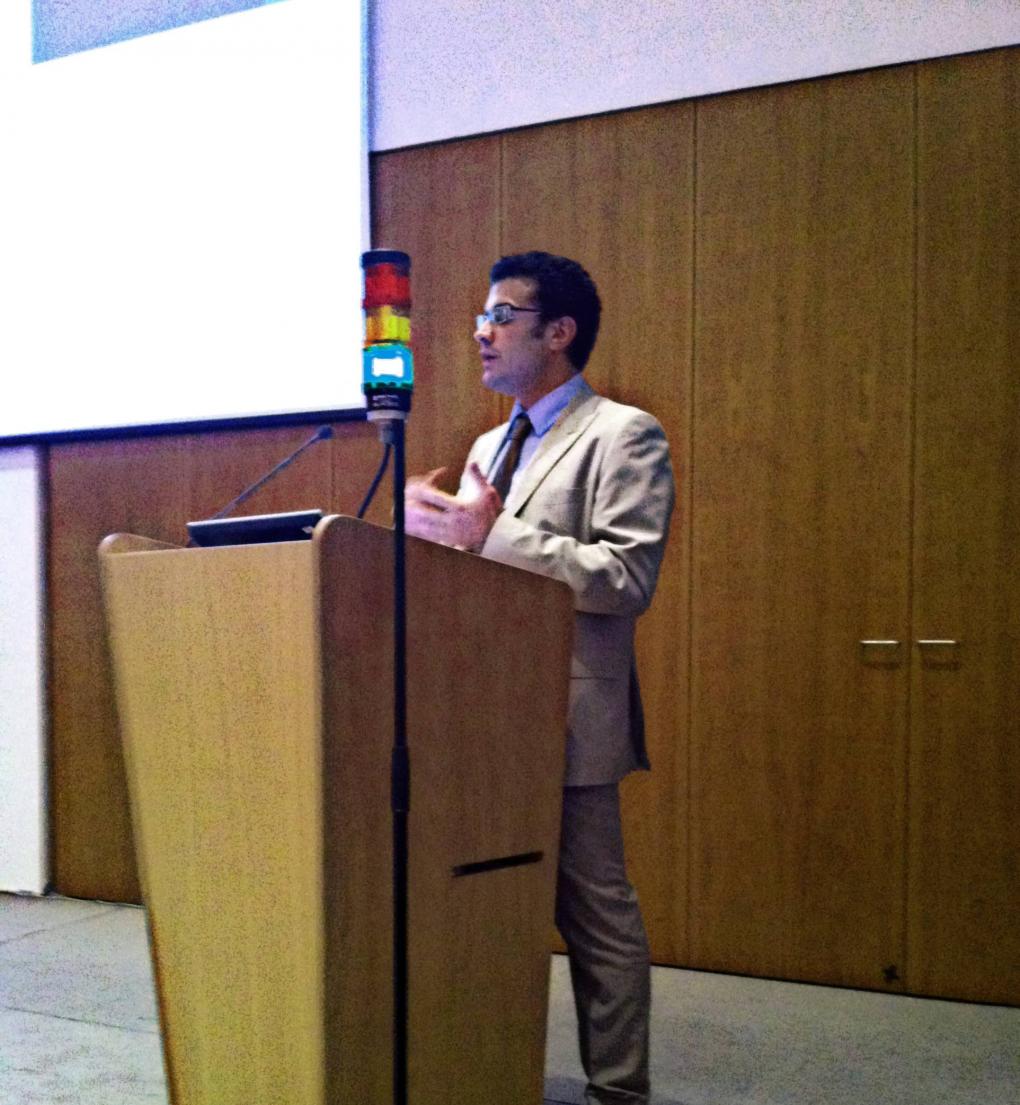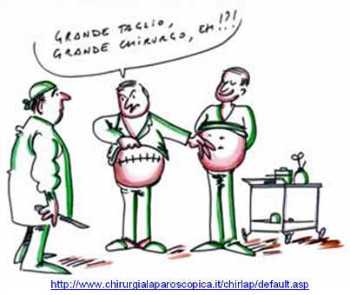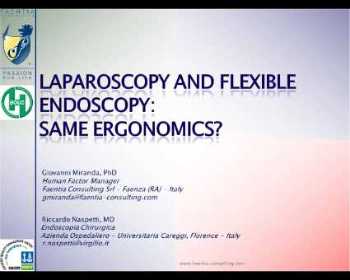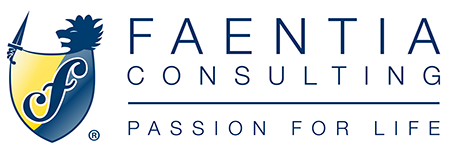
The technological progress that characterized the 20th century, has brought about many important changes in our everyday life, from the invention of the electric bulb to that of computers, all the way up to the constant miniaturization of digital products, which are being upgraded and renewed almost every month. Such technological innovation has certainly modified our lifestyle, both at home and at work. In fact many categories of workers and professionals have seen their working routines change completely. For instance, how many engineers nowadays can design something without the help of a digital CAD program? Surgeons are among the professionals that have definitely been facing many changes. For several years now diagnostic techniques such as endoscopy or surgical techniques such as laparoscopic surgery (or Laparoscopy) have become part of their daily practices.

Endoscopy is an exploration method that allows the visualization of the inner part of the human body through an optical fiber duct, called endoscope, which is equipped with one or more miniature video-cameras that broadcast real-time images though a screen. The endoscope is inserted within the human body possibly through a natural duct.
Laparoscopy on the other hand is a surgical technique that allows a surgical operation to take place thanks to surgical instruments introduced inside the abdomen through minuscule holes on the abdominal wall.
Its innovation consists in the final result, which is remarkably more aesthetic than those obtained with traditional surgery, since the abdomen is no longer opened. Such techniques have brought about important changes in O.R. working methods, because they allow to observe and operate upon patients in a remarkably less invasive manner. Such techniques grant the patient's integrity on one hand while achieving a surgical result on the other.

The advantages for the patient are remarkable: reduction of post surgical pain, faster recovery, shorter off-work time and last but not least, the reduction of possible aesthetic damage thanks to the quasi-complete absence of extended scars. There are however some risks for the surgeons and their working teams inside O.R.'s. Such risks have been studied and taken into consideration only lately. Recent studies in fact have analyzed the working conditions of O.R. teams and a slight worsening has emerged in relation to the past. One could say that it is correct to consider the new surgical trends as “ergonomic” if we see the patient as the final user, but certainly not so if our final user is the working team!
As already anticipated in the previous Newsletter of June, in the last few months Faentia Consulting, together with its Ergonomics Research and Development Business Units, has developed a study based on the analysis of the working conditions inside O.R.'s. Its results have been presented on June 17th at the 19th International Convention of the European Endoscopy Society (E.A.E.S – www. Eaes.eu) hosting the 15th National Convention of the Italian Society of Surgical Endoscopy (SICE – www.siceitalia.com)
The study was conducted by Eng. Giovanni Miranda (Ergonomics B.U. - Faentia Consulting) and Doctor Riccardo Naspetti, director of the Surgical Endoscopy Department at the Careggi Hospital of Florence. It is entitled “Laparoscopy and Flexible Endoscopy: Same Ergonomics?” and it was carried out through a systemic and global approach to the problem that led to the definition of “Single Surgical System”, i.e. a system constituted by various elements: the working team (surgeons, nurses, surgical technologists radiologists, anesthesiologists) the patients, the instruments used and the O.R.
The study, thereafter confirmed various theories referring mostly to the working team, i.e.:
- the exposure to physical dangers (or ergonomical-physical dangers) such as muscular-skeletal disorders, fatigue or physical discomfort – due to the standing position (static and prolonged) or to the height of the Operating table or of the screen etc.;
- the ergonomic physical dangers are related to as many cognitive dangers (ergonomic-cognitive dangers), such as stress, elevated psychological burden or cognitive disturbances due, for instance to the spatial separation between the physical and the visual aspects of surgery, as well as to the loss of real and peripheral vision of the operating field, since the surgeon only sees what the instruments see. Beside analyzing the above mentioned dangers, the work proposes a solution to their exposure.
Such solution, summarized by Doctor Naspetti at the end of his lecture, would be” (…) there are many dangers to which we are exposed as surgeons, some are known, others less known. We believe it is necessary to face the problem of exposure to such dangers through a final-user centered approach, where the “the medical sanitary personnel constitutes the final user”. Such approach should imply the involvement of final users, surgical-medical instrument producers, AUSLs and ergonomists within the ergonomic design cycle of medical-surgical products. Ergonomics experts in particular are very important since they have a deep knowledge of the interaction between man and the other components of the “surgical system”, so they can facilitate the improvement of the working conditions and therefore of the lives, and well being of the whole working team”. Faentia Consulting will continue its study by further deepening their research and analysis using the typical instruments of Ergonomics, such as interviews, questionnaires and focus groups. The present newsletter was written by Eng. Giovanni Miranda- PhD, Doctor Mario Casmiro and Doctor Riccardo Naspetti.


